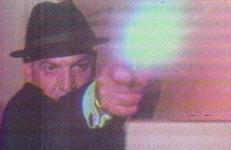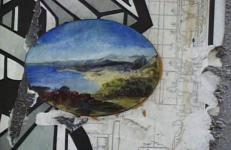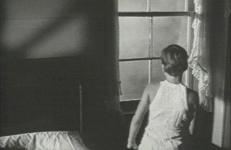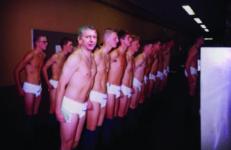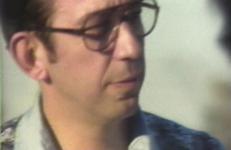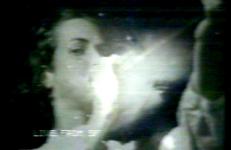The latest in Muntadas and Reese's series documenting the selling of the American presidency features political ads from the 1950s to ads from the 2012 campaigns, and highlights the development of the political strategy and marketing techniques of the TV campaign process.
Media Analysis
The 2016 installment in Muntadas and Reese's series documenting the selling of the American presidency features political ads from the 1950s to ads from the 2016 campaigns, and highlights the development of the political strategy and marketing techniques of the TV campaign process.
The 2016 installment in Muntadas and Reese's series documenting the selling of the American presidency features political ads from the 1950s to ads from the 2016 campaigns, and highlights the development of the political strategy and marketing techniques of the TV campaign process.
The 2024 installment in Muntadas and Reese's series documenting the selling of the American presidency features political ads from the 1950s to ads from the 2024 campaigns, and highlights the development of the political strategy and marketing techniques of the TV campaign process.
The 2024 installment in Muntadas and Reese's series documenting the selling of the American presidency features political ads from the 1950s to ads from the 2024 campaigns, and highlights the development of the political strategy and marketing techniques of the TV campaign process.
The "cross-over" in Olympic Women Speed Skating is juxtaposed against General Hospital's whites in reverse angle shots. A couple tries disparagingly to reach an understanding. Skaters continuously return to the starting line. Frustration and exertion combine with originally scored soundtracks of disco, rock, and jazz.
Pop-Pop Video: Kojak/Wang takes a shootout from Kojak and extends the shot and counter-shot into a potentially endless battle. In the original TV fragment, images, gestures and actions rebound off one another like the echoes of repeated bursts of gunfire. Birnbaum compares gunfire with the beams of laser light from a computer in a Wang commercial, connecting destruction and violence with the products of advancing technology.
Production Notes allows us to eavesdrop on the business decisions behind the creation of our daily diet of television commercials. This excellent tape undertakes to explode the address of seven TV ads by means of repetition, slow motion, and “production notes”— memos sent from the advertising agency to the production company prior to filming the spots, to describe the intentions, desires, strategies and ideology of the commercials and their creators.
Public Discourse is an in-depth study of illegal installation art. The primary focus is on the painting of street signs, advertising manipulation, metal welding, postering and guerrilla art, all performed illegally. Public Discourse is about passionate artists who want their work to be seen by a wide range of people rather than be confined to the systemic structures of galleries and museums.
Public Discourse is an in-depth study of illegal installation art. The primary focus is on the painting of street signs, advertising manipulation, metal welding, postering and guerrilla art, all performed illegally. Public Discourse is about passionate artists who want their work to be seen by a wide range of people rather than be confined to the systemic structures of galleries and museums.
Public Discourse is an in-depth study of illegal installation art. The primary focus is on the painting of street signs, advertising manipulation, metal welding, postering and guerrilla art, all performed illegally. Public Discourse is about passionate artists who want their work to be seen by a wide range of people rather than be confined to the systemic structures of galleries and museums.
How do we tell the story of a life? What cruel reduction of an image will stand (in the obituary, the family photo album, the memory of friends) for the years between a grave and a difficult birth? Public Lighting examines the current media obsession with biography, offering up “the six different kinds of personality” (the obsessive, the narcissist) as case studies and miniatures, possible examples.
Putting the Balls Away is a reenactment of the historic September 21, 1973, tennis match between Billie Jean King and Bobby Riggs, created for broadcast on the 35th anniversary of the original event. The Battle of the Sexes was the most-watched live sporting event at that time, and pitted chauvinist against feminist, when women tennis players demanded equal pay to that of their male counterparts. Both players are performed by Mateik, whose work wages strategic operations to overthrow institutions of compulsory gender. After each game the competitors "switch sides".
"Beginning in 2020, in response to the cultural and political upheavals that were playing out in the United States, I started making a series of videos to help me understand and cope with what was going on around me. To date, five videos have been made under the heading, Imperfect Union Productions.
Based on a set of drawings that depict George W. Bush's administration as wounded soldiers in the war against terrorism, RE:THE_OPERATION explores the sexual and philosophical dynamics of war through the lives of the members as they physically engage each other and the "enemy." Letters, notes, and digital snapshots "produced" by the members on their tour of duty become the basis of video portraits that articulate the neuroses and obsessions compelling them toward an infinite war.
RECKONING 7 is something of an instrumental interlude between longer, denser episodes of the RECKONING series, which is now being made and released "out of order.” Through an improvised electronic score and footage from the prison yard lobby of a popular battle royale game, it floats a modest proposal of multiplayer online game as altered space for collaborative performance, meditation, levitation, and indecision.
Part of a cable TV series called Communications Update that aired on public access in New York City from 1979 through 1992, these tapes provide an early example of television made by artists. The series centered on the democraticization of the media. Birth Of An Industry covers a Miami satellite TV convention attended by thousands of backyard satellite TV enthusiaists, inventors, and entrepreneurs.
This is a gaze of the body and a notion of spectator that the 90´s decade constructed, this is the audiovisual legacy of the 90's for our actual audiovisual control world.
This is a gaze of the body and a notion of spectator that the 90´s decade constructed, this is the audiovisual legacy of the 90's for our actual audiovisual control world.
This is a gaze of the body and a notion of spectator that the 90´s decade constructed, this is the audiovisual legacy of the 90's for our actual audiovisual control world.
Scenes from an Endless War is an experimental documentary on militarism, globalization, and the "war against terrorism." Part meditation, part commentary, Scenes employs recontextualized commercial images, rewritten news crawls, and original footage and interviews to question received wisdom and common sense assumptions about current American policies.
A primer in satellite system operation, Send/Receive extends the critique of media as commodity by asking questions concerning the people's right to access satellites. The objective of Send/Receive was specifically to connect groups of artists on the East and West Coasts via public satellite, and it was the first artist-initiated project to do so.
A primer in satellite system operation, Send/Receive extends the critique of media as commodity by asking questions concerning the people's right to access satellites. The objective of Send/Receive was specifically to connect groups of artists on the East and West Coasts via public satellite, and it was the first artist-initiated project to do so.
An upbeat and engaging documentary with a dynamic, experimental style. Beijoquerio introduces viewers to a Brazilian man who strives for world peace by kissing all the rich and famous people he can reach. Upon hearing that Frank Sinatra was afraid to come and perform in Brazil, he felt compelled to go and kiss Sinatra to prove Brazil was a friendly place. He has suffered many injuries and broken bones as a result of his mission, which curiously enough embodies basic notions of “Christian” behavior, yet scares many away.
Award-winning videomaker Kip Fulbeck brings his blistering pace, comedic skill, and critical eye to bear on the Hapa and Asian American male experience—parodying the relationships between sex, love, and martial arts movies.








